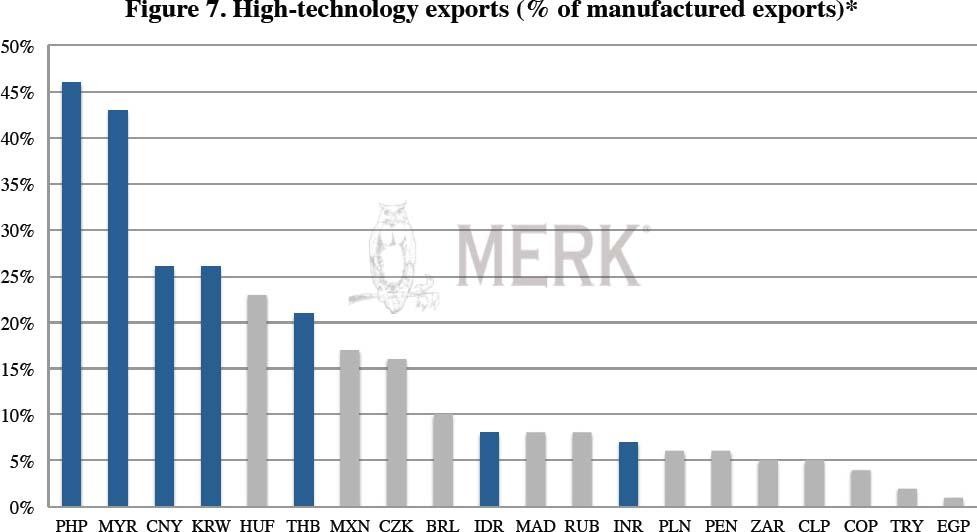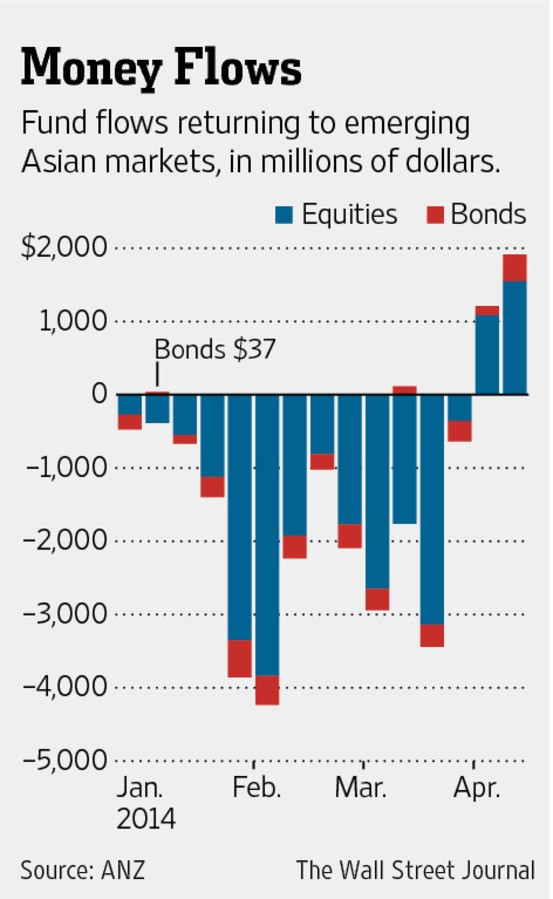US growth boosts markets steadies emerging currencies
Post on: 5 Август, 2016 No Comment

Strong US growth figures brought a reprieve to markets on Thursday after a Federal Reserve stimulus cut rattled emerging economy currencies despite rate rises by India, South Africa and Turkey.
European stocks initially fell after the Fed’s announcement it would reduce its bond-buying program by $10 billion to $65 billion per month, citing a pick-up in the US economy.
But the mood turned around after the announcement that the US economy grew at a stronger-than-expected annual rate of 3.2 percent in the fourth quarter.
By the end of trade, Frankfurt’s DAX 30 added 0.39 percent and the CAC 40 in Paris rose 0.55 percent. London’s FTSE 100 was marginally lower.
And on Wall Street, the news on fourth quarter economic growth, as well as some significantly strong corporate earnings results, notably Facebook’s, drove a firm rebound.
The Dow Jones Industrial Average ended up 0.70 percent, the broader S&P 500 1.13 percent, and the Nasdaq Composite, powered by strong gains in Facebook, Twitter, Google and other online ad-dependent tech stocks, jumped 1.77 percent.
Earlier, Asian markets, which mostly finished trading ahead of the us GDP announcement, fell heavily again on the news the US central bank further reduced its quantitative easing (QE) stimulus overnight.
In currencies, the emerging market economies hurt most by the turmoil, Russia’s ruble, the South African rand, Turkey’s lira, Brazil’s real and the Indian rupee were all either flat or stronger, even as the dollar itself surged against other major currencies.
The Fed justified its second cut in as many months to the quantitative easing stimulus program — bringing it to $65 billion a month from $85 billion in December — citing growing underlying strength in the broader economy.
Combined with the US October-December growth data, that was good news for a global economy worried about slower growth in China, a key motor for emerging and poorer economies because it buys so many raw materials from them.
The rebound however did not necessarily spell a respite from more turmoil. The Fed’s move slows down the flow of easy money into the global financial marketplace, while stronger US growth boosts the attractiveness of the US to capital.
And as a result of both, US dollar yields went up as well, another pull on capital from more risky markets.
Meanwhile developing countries face their own challenges of slower growth and, for many, high inflation.
Monetary tightening in a number of countries will have a very negative effect on investment and consumption, said Philippe Martin of France’s Sciences Po university.
In addition, falling currencies where governments and the private sector have high US dollar-denominated debt will see their debt explode, he warned.
There would then be contagion via international trade, hitting growth for the world economy.

Nick Stamenkovic at RIA Capital Markets in London said emerging market volatility looks set to continue.
Rate hikes in Turkey and South Africa have failed to lift their beleaguered currencies as investors fret about the adverse impact on growth in both countries.
Stamenkovic said those most at risk are countries suffering from sizeable current account deficits which are heavily dependent on capital inflows.
Economist Neil MacKinnon at Russian firm VTB Capital, described the outlook as poor for emerging nations, adding that rate increases were unsustainable and hurt growth.
It is poor fundamentals rather than Fed tapering which is keeping pressure on countries like Brazil, India, Indonesia, Turkey and South Africa, which investors have taken to calling the fragile five.
Raising interest rates to defend currencies is not sustainable given the impact on those countries’ economic growth, he added.
Argentina’s plight underscores the challenges. The central bank reported another $2.1 billion fall in foreign reserves to just $28.5 billion this month as it sought to defend the peso, which nevertheless is down more than 18 percent Since January 1.
In Russia, where the ruble hit an all-time low against the euro, there was talk that the Central Bank may delay a planned 2015 free-float of the currency because of its precipitous drop.
The Russian Central Bank reported spending more than $1.1 billion on the Moscow Exchange on Monday and analysts said they suspected an even larger sum was used up both on Wednesday and Thursday to support the currency.














